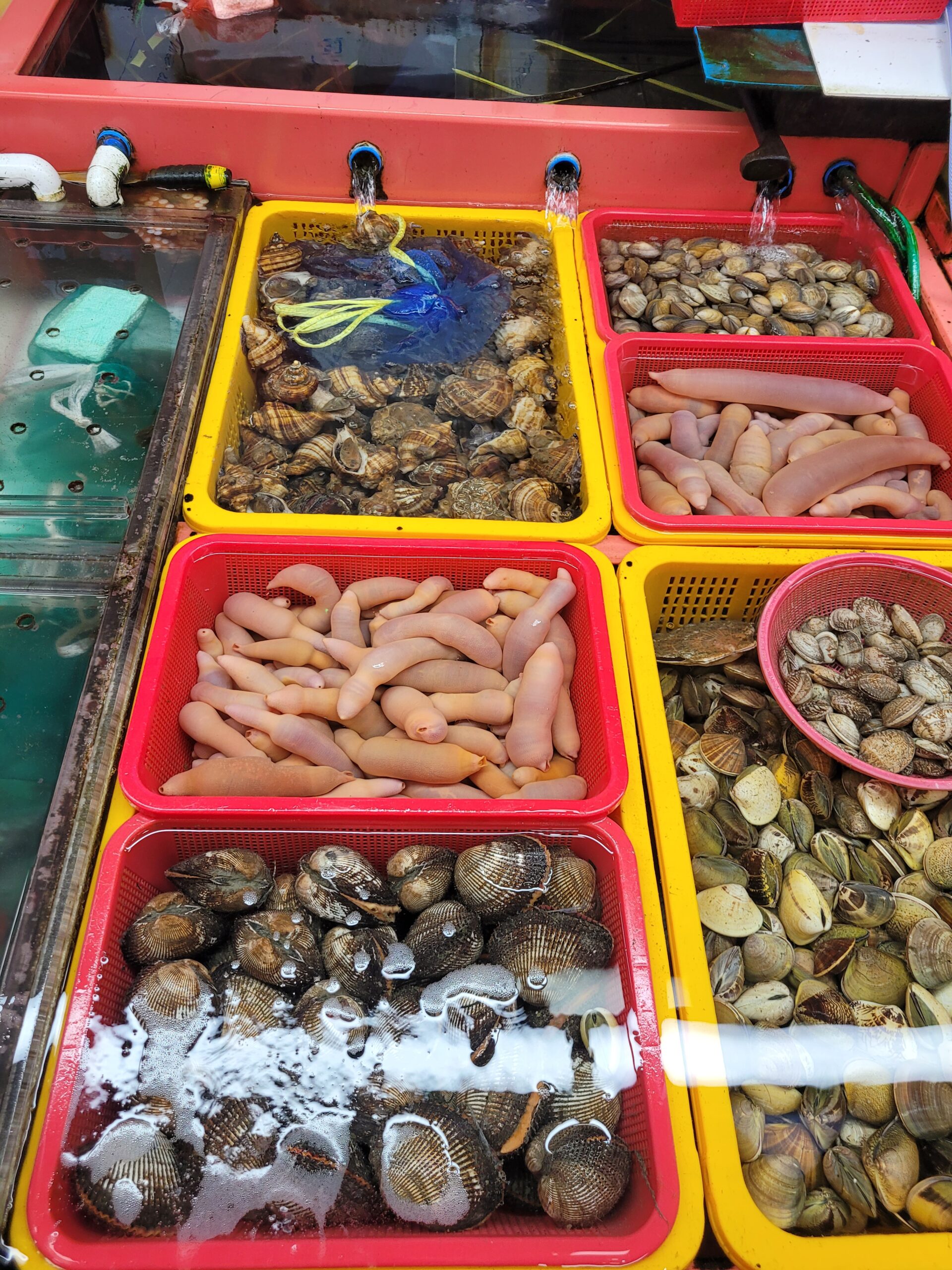
Week 11 – Train to Busan 5/6
There was a day when I felt extra curious, so I decided to take a trip down south to Busan for a week. Since I lived near Seoul Station, it was easy to figure out the mode of transportation that I wanted to take. Plus, there was a movie made about it. My friends and I figured that we could make it a fun trip and take a train to Busan.
It was actually a bit difficult trying to buy tickets online because it is always incredibly hard to purchase things online in South Korea (as a foreigner). So we decided to buy the tickets at Seoul Station the day before. We took our ride to Busan the following morning and arrived in Busan by noon. The first thing we did was eat and we found a dwaeji gukbap restaurant around every corner. Dwaeji gukbap is a popular South Korean soup from Busan and it is made with pork, soy sauce, miso, rice wine, sesame oil, and bone broth. In this dish much like many other Korean dishes–the soup is accompanied by a variety of side dishes such as rice, salty shrimps, onions, noodles, kimchi, garlic, and green peppers, which can all be added to the steaming bowl of soup. You must add your salty shrimps or salt to spice up the dish and it makes it delicious.
Dwaeji gukbap started as a poor man’s meal, dating back to the Korean War in the 1950s when refugees from North Korea used to prepare it with beef. Over time, the soup became a popular local dish, especially in Busan. We stayed at a place called Mozzi Hostel which had a lovely panoramic view of one of the many bridges in Busan. It changed colors in the night so it was a beautiful sight to behold.
During that week in Busan, we visited a lot of attractions and sites. Gamcheon Village was an interesting sight and it was fun to follow the walk as it took you around the village to see the different views of the colorful rooftops. Then, there was Jalgachi Fish market where you could pick any of the fresh fish and take it upstairs to a restaurant to cook it. Next to Busan Station, you will land right in front of Chinatown or Russiatown. There are a large number of Russian and Chinese restaurants along the street and it flows into Texas Street where there are restaurants and bars with American city names. If you want to get out of the center, then you should go up to Haeundae to visit the beautiful beach and boardwalk. If you want to go even further outside the city, you can take a day trip to Haedong Yongguensa Temple where you can see the beautiful temple by the sea. It was by far one of the most beautiful Buddhist temples in South Korea.
Overall, the people in Busan are what made the trip so lovely. People were so outgoing, friendly, and direct in Busan, compared to Seoul. Locals were more willing to talk and they offered to help us out when we seemed lost.

